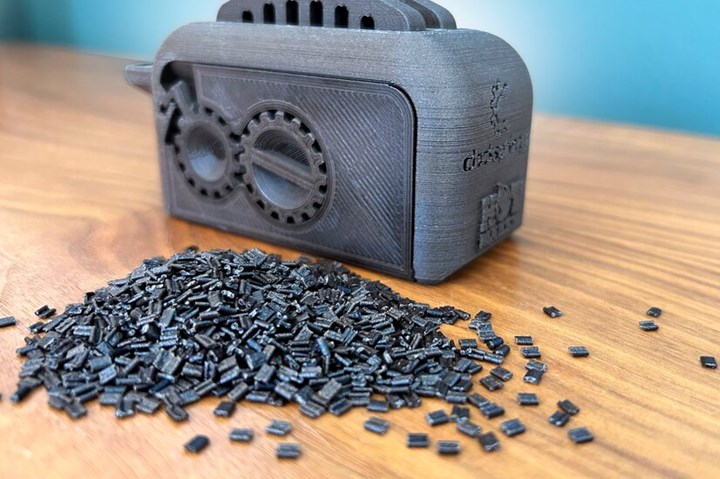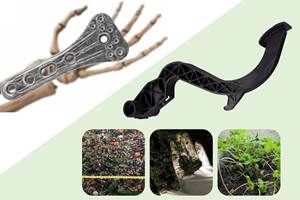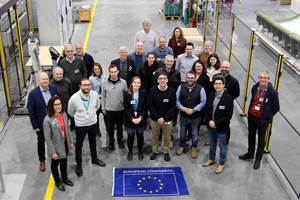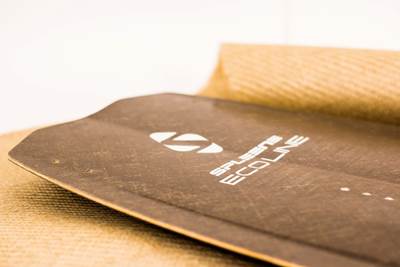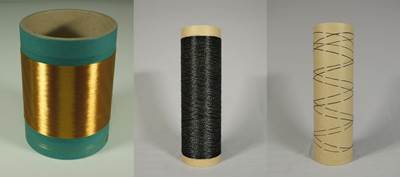Lignin reinforcement enhances PLA biopolymer functionality
Intensive development work between Synergy Horizon Poland and KraussMaffei has resulted in development of bio-based PLA using 30% hydrolized lignin during extrusion processes.
Share
Together with Cypriot Synergy Horizon Group’s Synergy Horizon Poland Sp. z o.o. (Dabrowka, Poland), KraussMaffei Extrusion GmbH (Laatzen, Germany) has developed a process for producing a 100% bio-based-reinforced thermoplastic: lignin-reinforced polylactic acid (PLA).
With a focus on hydrolysis lignin valorization, the Synergy Horizon group of companies aims to transform lignin, a biopolymer that is often discarded as a byproduct of bioethanol, into valuable products for various applications. Its competencies involve lignin purification, as well as its chemical modification and functionalization. Synergy Horizon offers lignin-derived products for various applications, such as oil and gas extraction, battery production, water treatment, animal feed and more.
“With our compounding expertise and our project partner’s knowledge of lignin preparation, we have succeeded in incorporating up to 30% lignin into the PLA matrix and producing a compound with natural antioxidant capacity/activity, enhanced mechanical properties and controlled biodegradability,” says Lars Darnedde, process engineering development and project manager at KraussMaffei Extrusion.
Synergy Horizon Poland Sp. z o.o., has also been recently developing a process at its Polish site in Poznan for the production of free-flowing lignin powder that can be metered into the extruder as a filler. Lignin is a 100% natural substance that is second to cellulose as the most abundant organic material on Earth. It can be extracted from lignocellulosic biomass by various methods, including hydrolysis of biomass for bioethanol production, which generates hydrolysis lignin as a byproduct.
Around 50 million tons of lignin, including hydrolysis lignin, are produced annually worldwide as a waste product from wood processing in the paper and bioethanol industries, 98% of which is incinerated. Various research projects have already dealt with the renewable bio-resource, but its use as a filler in a biopolymer matrix is, so far, said to be unique to industry.
“However, processing hydrolysis lignin is not an easy task,,” Alexander Gonchar, the head of research and development at Synergy Horizon, notes. Nevertheless, the company now operates a commercial production line for manufacturing lignin powder.
Alongside this success, KraussMaffei has now demonstrated the incorporation of the natural raw material into the PLA matrix in its newly established technical center at the Laatzen site. Both the laboratory extruder, a ZE Blue Power 28, and the small ZE Blue Power 42 production compounder, succeeded in incorporating up to 30% lignin.
“We have adapted the screw configuration to the lignin with heavy-sensitive mixing elements, operate at a low temperature of 160°C maximum, and use a six D-long filling zone and side degassing,” Darnedde explains. “The ZE BluePower generation with its Da/di of 1.55 offers all these possibilities ‘out of the box’ and is thus suited for processing these shear- and temperature-sensitive polymers.”
Through extensive mechanical tests, the lignin-reinforced PLA enables flexural and tensile modulus to be increased by around 30% compared to pure PLA. Moreover, unlike pure PLA, which has limited biodegradability due to its dependence on specific enzymes and industrial conditions, PLA bio-compounds containing lignin exhibit enhanced biodegradation properties with a biodegradation rate of more than 90% in 99 days. These characteristics, in addition to its ability to add sufficient antioxidant capacity, and its lack of odor, make it suitable for food packaging.
Related Content
DITF develops water-spun lignin fibers as PAN precursor alternative
Lignin fibers produced via an aqueous solution and dry spinning process result in homogeneous, smooth-surfaced fibers that are more environmentally friendly and cost-saving.
Read MoreBioabsorbable and degradable glass fibers, compostable composite parts
ABM Composite offers sustainable options and up to a 60% reduction in carbon footprint for glass fiber-reinforced composites.
Read MoreEvolving natural fiber technology to meet industry sustainability needs
From flax fiber composite boats to RV exterior panels to a circularity model with partnerships in various end markets, Greenboats strives toward its biomaterials and sustainable composites vision in an ever-changing market.
Read MoreEuropean SUSPENS project targets green composites production
The 13-partner program will addresses the challenge of reducing the environmental footprint of sandwich and hollow composite structures via bio-sourced resins and carbon fiber precursors.
Read MoreRead Next
German consortium develops biopolymer-based Cellun composite
German Institutes of Textile and Fiber Research (DITF) and partners present a conventional composite material alternative using cellulose that can be processed using industrial processing methods.
Read MoreSicomin GreenPoxy 33 chosen for Spleene kiteboard range
Flax fiber multiaxial reinforcement plies, a CNC milled wood core and bamboo rail sections are press molded together using Sicomin’s bio-epoxy resin system for an eco-friendly twintip kiteboard production.
Read MoreDITF develops water-spun lignin fibers as PAN precursor alternative
Lignin fibers produced via an aqueous solution and dry spinning process result in homogeneous, smooth-surfaced fibers that are more environmentally friendly and cost-saving.
Read More
